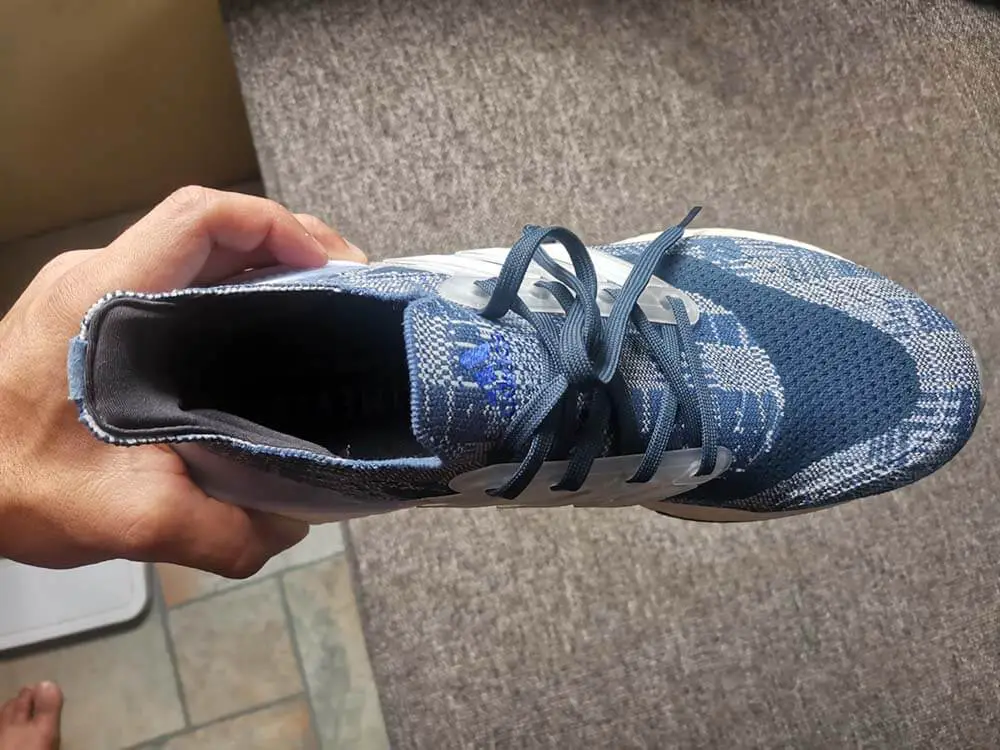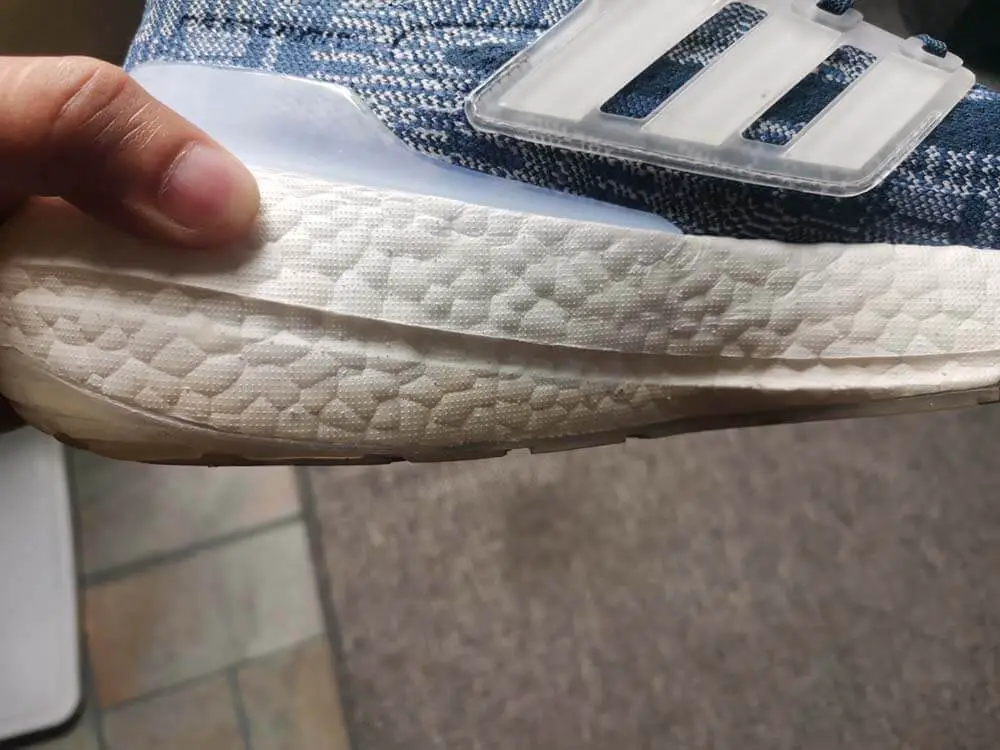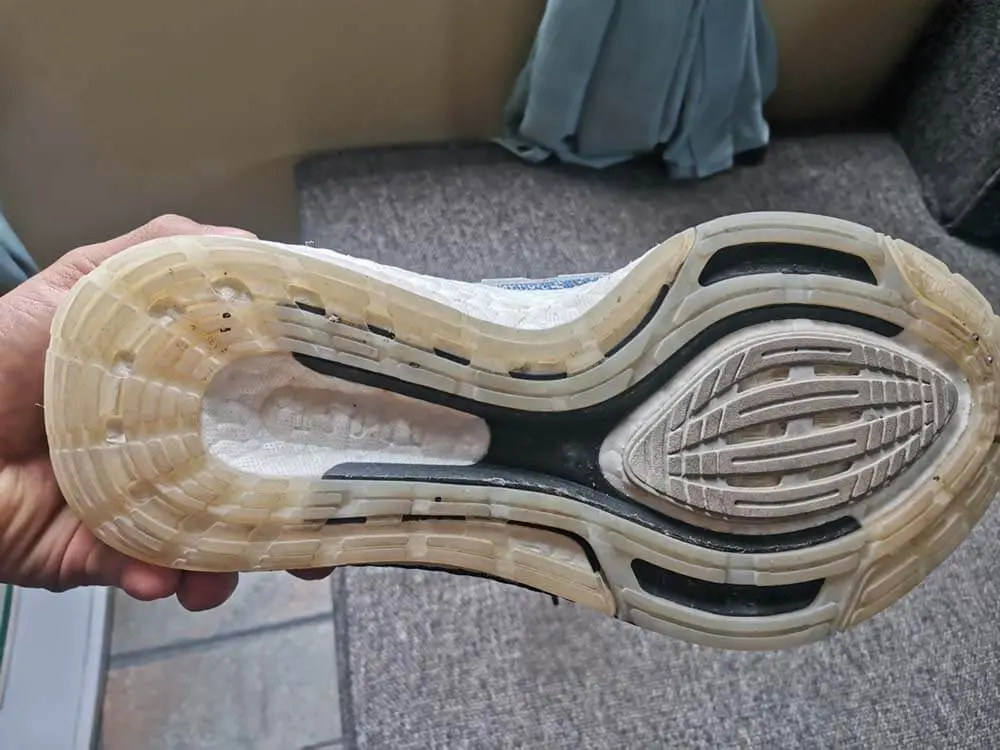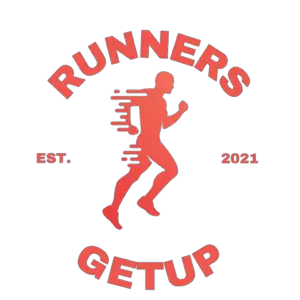This post contains affiliate links.
Running shoes are one of the most stylish and comfortable types of shoes out there and it’s something we’d all love to wear day in and day out. But is it okay to wear your running shoes casually?
I was sitting on a bench inside a shopping center when I noticed a lot of people wearing running shoes casually. Although I’m quite sure they bought the shoe for its style rather than performance, I started wearing mine almost every day both casually and for running.
After a few months, I noticed that particular running shoe started to break down a little sooner than my other running shoes. And it doesn’t seem to feel the same when I run. So I researched deeper into the components of the shoe and how to make them last, here’s what I found:
You shouldn’t wear your running shoes casually. The more you wear them, the sooner their components wear off and the shorter their lifespan will be. In addition, walking in a running shoe compresses the heel cushion faster which will affect its transition on the run.
Ahead, we will get into details as to how wearing them casually decreases its lifespan. We will also dive deeper into how frequent use will damage each component of the shoe.
Why you shouldn’t wear running shoes casually
Well, technically no law states that you can’t wear them if you want to. I mean, I even bought Adidas Ultraboost just to wear it casually. They look great but I have no intention of running in them.
But if you’re serious about running and you want to get the best out of your running shoes, you should buy a running shoe dedicated to the purpose of running.
Here are 6 other reasons why you shouldn’t use your running shoes casually.
- They use advanced technology – Running shoes use advanced shoe technologies designed for overall comfort and performance. Using them for purposes other than running would be a waste of those advanced technologies.
- They have a delicate midsole – The midsole is the heart of your running shoe and they have to stay soft to provide support when you run. Every time you use your running shoe, you compress the midsole. And if you use them often, it will fail to give you the support you need for the long run.
- They’re expensive – In case you haven’t noticed, running shoes are very expensive. Shortening their lifespan will also mean taking out a hefty amount from your pocket more often.
- Running shoes need 24-48 hours to recover – Believe it or not, you need to give your running shoes a break for their midsoles to expand back to normal. Wearing them casually takes away the time it needs to recover.
- It stinks – Well, if you’re not afraid of damaging your shoe, maybe the fact that it stinks will make you change your mind about using them casually. Running shoes absorb a lot of sweat which can be a site for bacterial build-up. When that happens, good luck explaining to your boss why the conference room stinks. If you need to get rid of the stink, read this article.
- You should pick running shoes because of performance, not style – In running shoes, performance is what matters. And if they perform better, you should pick them over the better looking ones. Wearing running shoes casually might influence you to take the better-looking one rather than the better one. So it’s good to just simply separate running shoes from casual shoes.
How your running shoe breaks down sooner when you use them casually
To be clear, running in a running shoe breaks it down faster than walking. However, using them casually will speed up the process of breakdown.
Your shoes are composed of an upper, a midsole, and an outsole. In running shoes, these components are dialed in to provide the best fit, a smooth transition, a comfortable land, and a good ground grip which makes them a better shoe performance-wise compared to casual shoes.
The more you use your running shoes regardless of whether you run in them or you walk, you take away something out of those components little by little.
Let’s look at what happens in each component as you use your running shoes more.
Upper – The upper in a running shoe is usually made with a light engineered mesh or knit-type fabric. It’s light, it’s snug and it’s breathable.

If you wear them on a daily basis, you may cause the uppers to stretch and it may no longer provide your desired fit. In addition, because of the constant flexing, it may break them down and create holes in them.
The heel counter can also be a problem. The heel counter of your running shoe is usually stout to provide support. If you use them often, you might break down the heel counter because of constantly wearing and removing them (sometimes not even loosening up the laces).
Midsole – Your midsole is the center of your running shoes. It’s what provides you with the soft, energized, or firm cushioning that is unique to running shoes.

Every time you run, you compress the shoe’s midsole and it would need 24-48 hours (as mentioned above) for them to expand back to normal.
When you use them daily, you take away that recovery period and you compress them even more. After some time, they may be unable to return to normal which can lead to your running shoe losing its cushioning.
In addition, running and walking gait is different. When you walk, you normally land with a heel strike. In contrast, running can be a heel, midfoot, or forefoot strike.
That means, if you walk a lot in your running shoes, you may compress the heel cushion sooner which can affect the transition of your running shoes.
When that happens, you have to get a new pair of running shoes prematurely.
One way to give your shoe a break is by having a running shoe rotation – that is, you own at least two pairs of running shoes and switch them out to allow your other shoe to recover.
Outsole – Your outsole is where most of your running shoe lifespan is determined. As a general rule, you should replace your running shoe once your outsoles are worn off to the point where you can see a part of the midsole.

Using your running shoes even for simple activities such as walking will wear off some of the outsole rubber and decrease its overall lifespan.
The wearing-off is due to the friction that occurs every time they hit the ground. Once they’re completely worn off, they will fail to provide traction and become unsafe.
How long is the expected lifespan of a running shoe?
Your running shoes are expected to last around 500 miles (industry standard), but it greatly depends on a lot of factors such as your body weight, running gait, and the shoe itself.
Some shoes can last up to 1000 miles if worn by the right runner while others can fall short to 300 miles.
If you want to learn more about how long running shoes last, check out this article.
By the way, if you’re still looking for a daily trainer that can handle a lot of work, I highly recommend the Brooks Ghost 13. It feels really good on the feet and it has a great build that will surely last a long time. I wouldn’t be surprised if you can get at least 700-1000 miles in them.
Final thoughts
In addition to its tremendous health benefits, running is a fun and exciting sport. This is why I highly recommend it to anyone who wishes to get fit.
If you’re interested in running, make sure you have the proper gear and you dedicate them just for running. Especially your running shoes.
I hope you found the answers you were looking for in this article.
